Celtic Sandstone Head with Bared Teeth
A Fine Celtic Sandstone Head with Bared Teeth
The oval eyes with ‘drilled’ pupils
England
200 - 300 AD
SIZE: 20.5cm high, 16cm wide, 25cm deep - 8 ins high, 6¼ ins wide, 9⁷⁄₈ ins deep / 28.5cm high - 11¼ ins high (with base)
The oval eyes with ‘drilled’ pupils
England
200 - 300 AD
SIZE: 20.5cm high, 16cm wide, 25cm deep - 8 ins high, 6¼ ins wide, 9⁷⁄₈ ins deep / 28.5cm high - 11¼ ins high (with base)
A Fine Celtic Sandstone Head with Bared Teeth
The oval eyes with ‘drilled’ pupils
England
200 - 300 AD
SIZE: 20.5cm high, 16cm wide, 25cm deep - 8 ins high, 6¼ ins wide, 9⁷⁄₈ ins deep / 28.5cm high - 11¼ ins high (with base)
The oval eyes with ‘drilled’ pupils
England
200 - 300 AD
SIZE: 20.5cm high, 16cm wide, 25cm deep - 8 ins high, 6¼ ins wide, 9⁷⁄₈ ins deep / 28.5cm high - 11¼ ins high (with base)
The Celts had a predilection for the human head. The ‘tete coupée’ of the Celts like that of the Gorgon or Medusa of the Mediterranean had apotropaic powers and fulfilled the function of averting evil, and of conferring protection on the building into which they were incorporated. Celtic heads were often associated with springs and thermal waters as was the Roman image of Medusa and thus native Celtic symbolism became acceptable to the conquering Romans as the deeply indigenous cult of the head was comfortably masked under the image of Medusa. The best known of these vigorous male images and typical of many Romano British heads is the head carved on the shield of the goddess Sulis, equated with Minerva, on the pediment of the temple of Sulis in Bath.
The Celts had a predilection for the human head. The ‘tete coupée’ of the Celts like that of the Gorgon or Medusa of the Mediterranean had apotropaic powers and fulfilled the function of averting evil, and of conferring protection on the building into which they were incorporated. Celtic heads were often associated with springs and thermal waters as was the Roman image of Medusa and thus native Celtic symbolism became acceptable to the conquering Romans as the deeply indigenous cult of the head was comfortably masked under the image of Medusa. The best known of these vigorous male images and typical of many Romano British heads is the head carved on the shield of the goddess Sulis, equated with Minerva, on the pediment of the temple of Sulis in Bath.
Celtic Sandstone Head with Bared Teeth
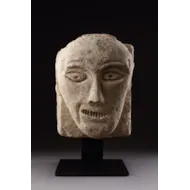
SOLD
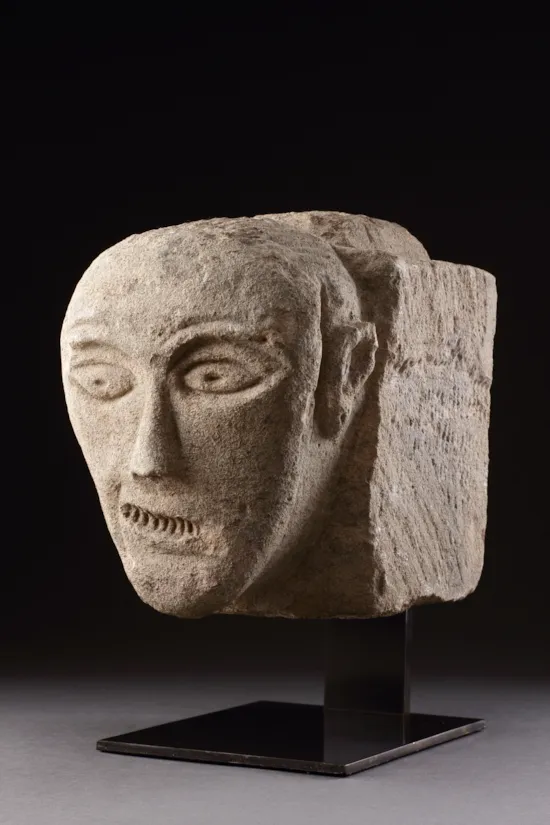
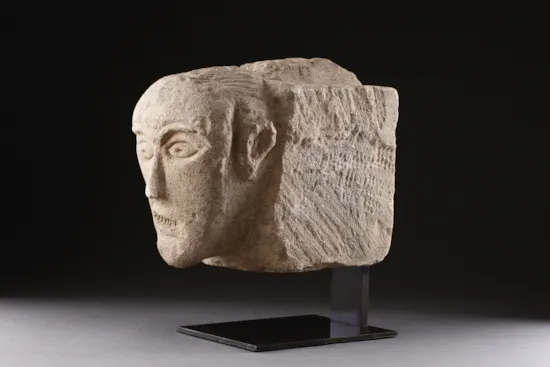
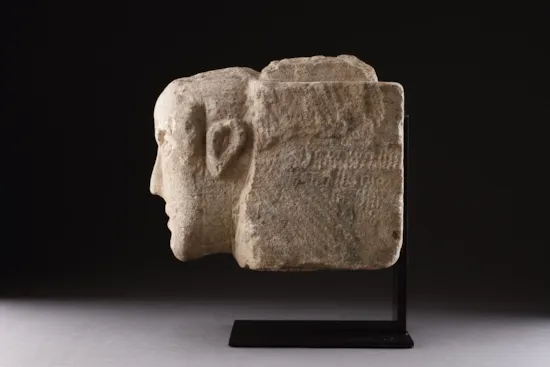
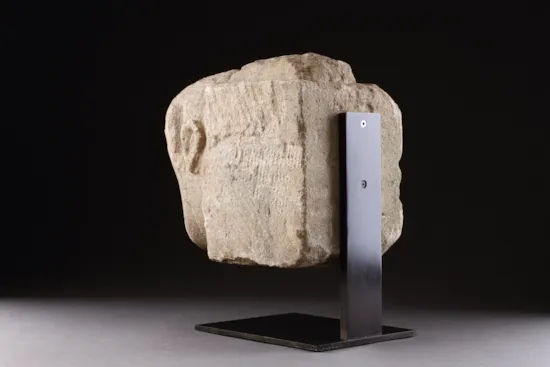
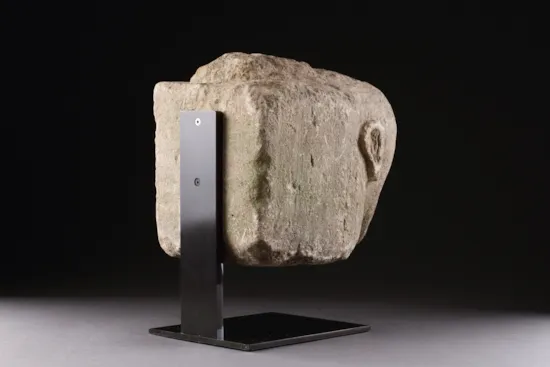
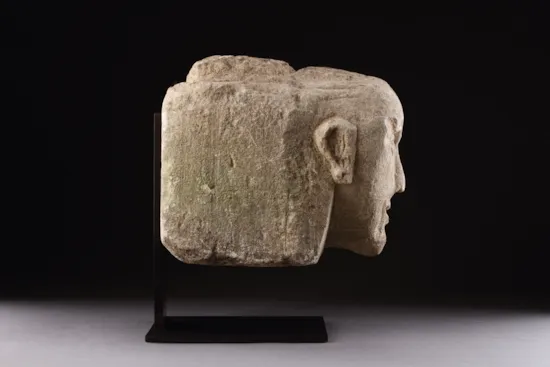
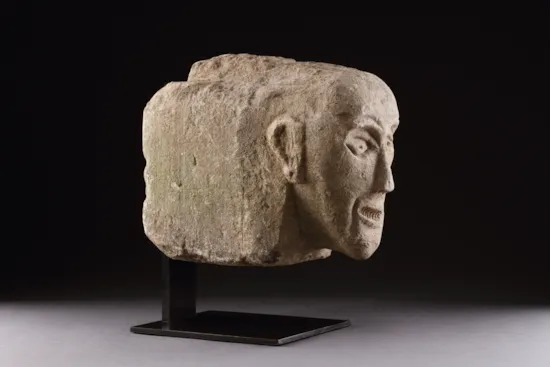
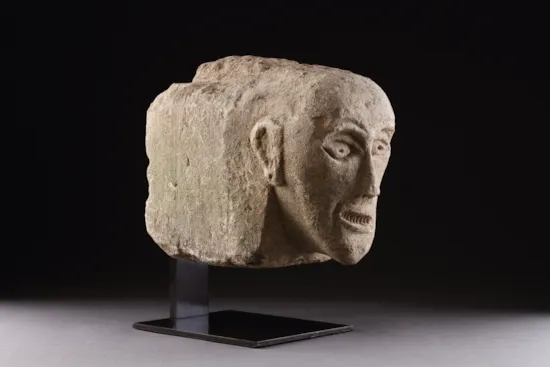
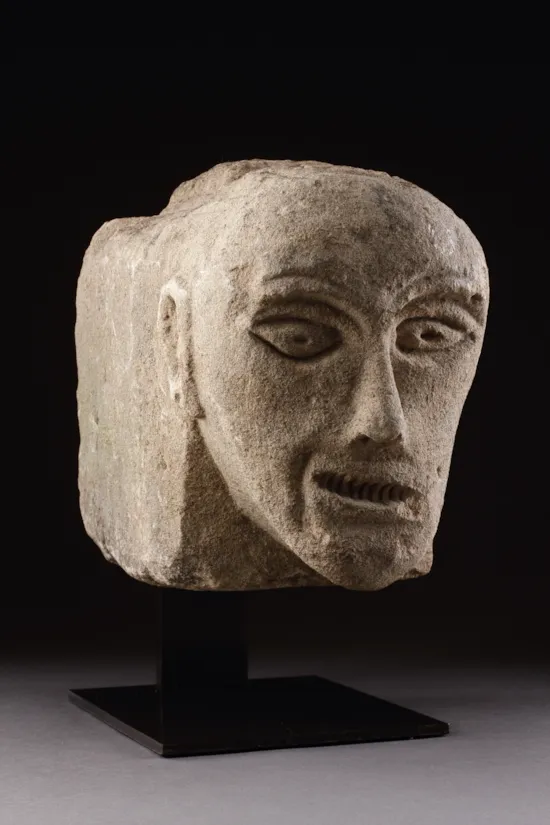









YOU MAY ALSO LIKE

